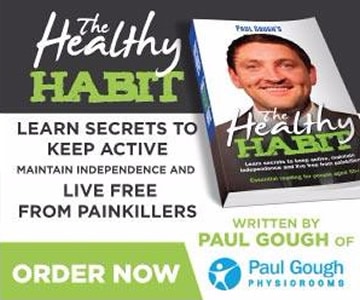Switching between different surfaces you train or play on causes big problems.
It’s a little known secret that costs so many grassroots sports men and women “time out” from being as active as they would wish.
It’s a fact. Your body will often react horrendously to the constant swapping and changing between surfaces such as from grass to hard in door 5 a-side surfaces.
And if it can happen to someone as high profile as Rafael Nadal, who suffered badly with a stiff back during last weeks Auzzie Open tennis final, then it’s likely to happen to you too. And ‘tis the season for the kind of thing to happen.
Here’s why: As the freezing temperatures blow in, and games are canceled due to frozen pitches or unsafe conditions, players are so often forced in doors. And it’s the infrequency, or irregularity at which this happens that causes the real problems.
It’s like this: Nadal favours clay courts. One quick look at his record and you can see he has the perfect game and physical set up for the clay courts which are much softer and have a touch less impact through his body, then say that of the hard surface inside an arena.
And so the impact and pounding of indoor surfaces takes its toll. A very similar thing is experienced by runners who swap long distance, cross-country type running for a nights work on a bouncy track surface. And doing it as a “one off” is what plays havoc with your body.
It’s impossible to say which will affect you most; it just pays to be aware of it. And for someone like Nadal and the other tennis players, they’re constantly having to swap and change the surface that they play and train on. Hence why something like what happened to Nadal on Sunday was not out of the ordinary.
Okay if you’ve got a body that will adapt, but for 8-10 people, that’s not the case. And means things like hamstrings, calf’s, lower back muscles and joints will “scream” at you the next day because they’ve had to work completely different.
Back to the footballers: My experience of this time of the season in professional football was that it would be my busiest time because the weather was so erratic, muscles were tired and surfaces were being changed. Some players would even point blank refuse to train in doors because they knew what sort of impact (negative) it would have upon them the next day.
For me, that was fine. I call that being responsible and not letting your ego rule. But some players, usually the younger ones, they would think that the older player was just copping out. But that’s not the case. And I’d encourage anyone to think twice before needlessly swapping surfaces. If you need to, factor it in to your routine so that you slowly ease your self onto it.
Try not to go from spending 3 months on grass, to all of a sudden 3 months on an indoor surface. Your body wont have time to adapt and the first few times you do it, you’re a big injury risk or at very least of suffering for days after with muscles that you think are worn in, being stiff achy and tired. And then you DO become an injury risk because you’ll be training through such problems.
If you do suffer like Nadal did, as you likely witnessed, massage is great to relax the muscle spasm, as is stretching. To try to prevent it, trick is to build up enough core strength to protect yourself by doing things like balance ball and core stability exercises offered in Pilates.
www.paulgoughphysio.com
Physio Clinics: Darlington | Durham | Guisborough | Hartlepool
Published in the Northern Echo: Sat 1st Feb 2014. Copy-Write. Paul Gouugh.

